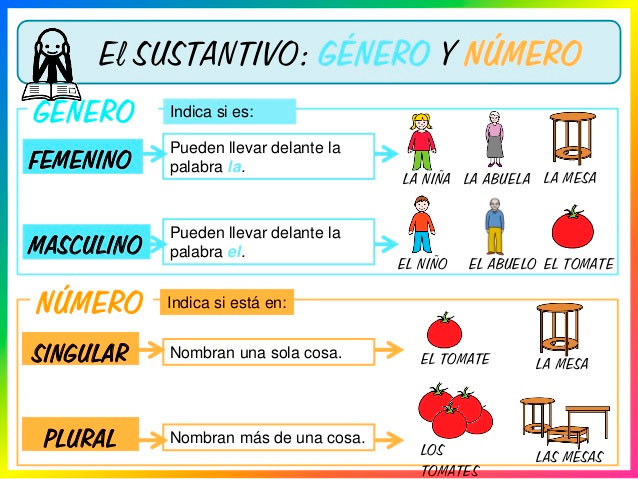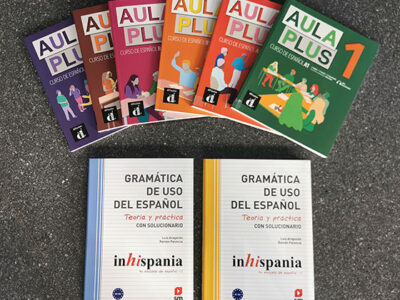In Spanish, nouns possess two fundamental grammatical categories: gender (masculine/feminine) and number (singular/plural). Mastery of these concepts is essential for grammatical accuracy, as they govern article and adjective agreement, verb conjugation, and sentence structure. This report examines the rules, exceptions, and nuances of gender and number in Spanish, integrating linguistic principles, historical influences, and practical applications.

Gender in Spanish Nouns
General Rules for Gender Assignment
Spanish nouns are classified as masculine or feminine based on their endings, though exceptions abound. The following patterns provide a foundational framework:
Masculine Nouns
- Endings in -o: el libro (book), el perro (dog).
- Endings in -or, -aje, -án: el amor (love), el garaje (garage), el pan (bread).
- Greek-derived nouns in -ma, -pa, -ta**: el problema (problem), el mapa (map), el planeta (planet).
Feminine Nouns
- Endings in -a: la casa (house), la mesa (table).
- Endings in -ción, -sión, -dad*, -tud**: la canción (song), la pasión (passion), la verdad (truth), la virtud (virtue).
- Endings in -ez, -eza*: la vejez (old age), la pureza (purity).
Notable Exceptions
- Feminine nouns ending in -o: la mano (hand), la radio (radio).
- Masculine nouns ending in -a: el día (day), el mapa (map).
- Invariable nouns: el/la estudiante (student), el/la artista (artist).
Gender in Profession and Animal Nouns
Spanish increasingly adopts gender-neutral forms for professions (e.g., el/la médico for “doctor”), though traditional feminine forms like la médica persist. Animal nouns often derive feminine forms via suffix changes: el gato (male cat) → la gata (female cat).
Number in Spanish Nouns: Plural Formation
Standard Pluralization Rules
- Nouns ending in a vowel: Add -s.
- el toro → los toros (bulls), la silla → las sillas (chairs).
- Nouns ending in a consonant: Add -es.
- el camión → los camiones (trucks), la mujer → las mujeres (women).
- Nouns ending in -z: Replace -z with -ces.
- el lápiz → los lápices (pencils), la actriz → las actrices (actresses).
- Nouns ending in -y: Add -es.
- la ley → las leyes (laws), el rey → los reyes (kings)
Special Cases and Exceptions
- Nouns ending in -s or -x: Remain unchanged if the last syllable is unstressed (el lunes → los lunes [Mondays]).
- Foreign loanwords: Add -s regardless of ending (el cómic → los cómics).
- Accent adjustments: Retain or omit accents to preserve stress (el examen → los exámenes, el carácter → los caracteres).
Advanced Considerations
Gender and Plural Agreement
Articles, adjectives, and pronouns must agree with nouns in gender and number:
- El libro rojo (The red book) → Los libros rojos (The red books).
- La casa grande (The big house) → Las casas grandes (The big houses).
Historical and Regional Variations
- Neuter gender remnants: Pronouns like ello (it) and lo (the) reflect Latin neuter influences.
- Dialectal differences: In parts of Latin America, el mar (the sea) is often feminine (la mar).
Practical Application: Exercises and Activities
Exercise 1: Gender Identification
Complete with el, la, los, or las:
- ___ idioma (language) → El idioma (masculine exception).
- ___ moto (motorcycle) → La moto (feminine, short for motocicleta).
- ___ problemas (problems) → Los problemas (masculine Greek-derived).
Exercise 2: Plural Formation
Convert to plural:
- la cruz (cross) → las cruces.
- el país (country) → los países (accent retained).
- el jersey (sweater) → los jerséis (regional variation).
Understanding gender and number in Spanish requires memorizing rules while acknowledging exceptions shaped by etymology, evolution, and regional usage. Mastery enhances clarity in communication and aligns with normative grammatical standards. Future studies could explore neuter pronouns in depth or analyze dialectal variations in gender assignment.
Practice Activity: For interactive exercises, visit GoConqr to test your knowledge of articles and plural forms.



